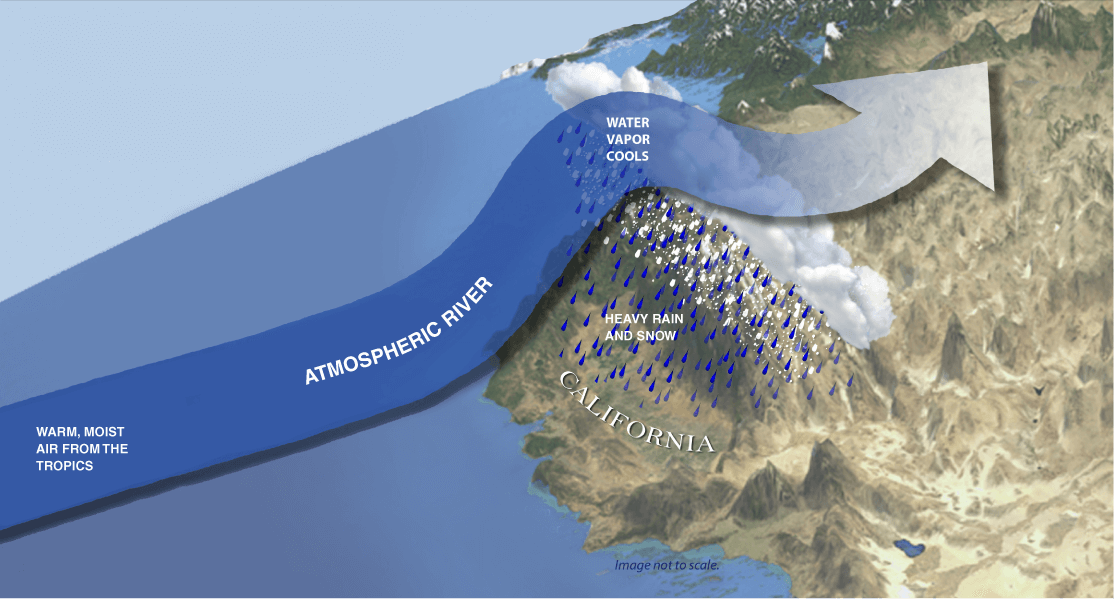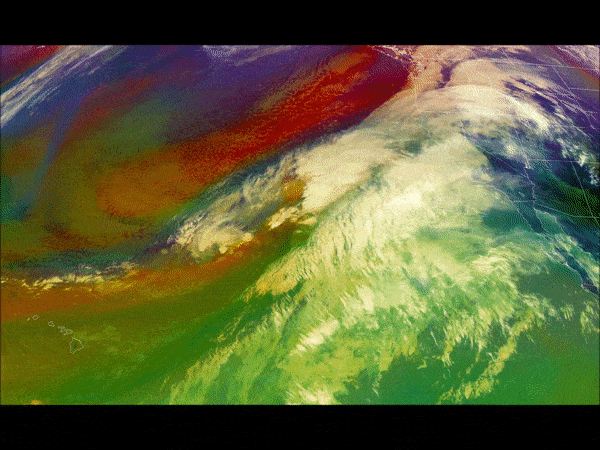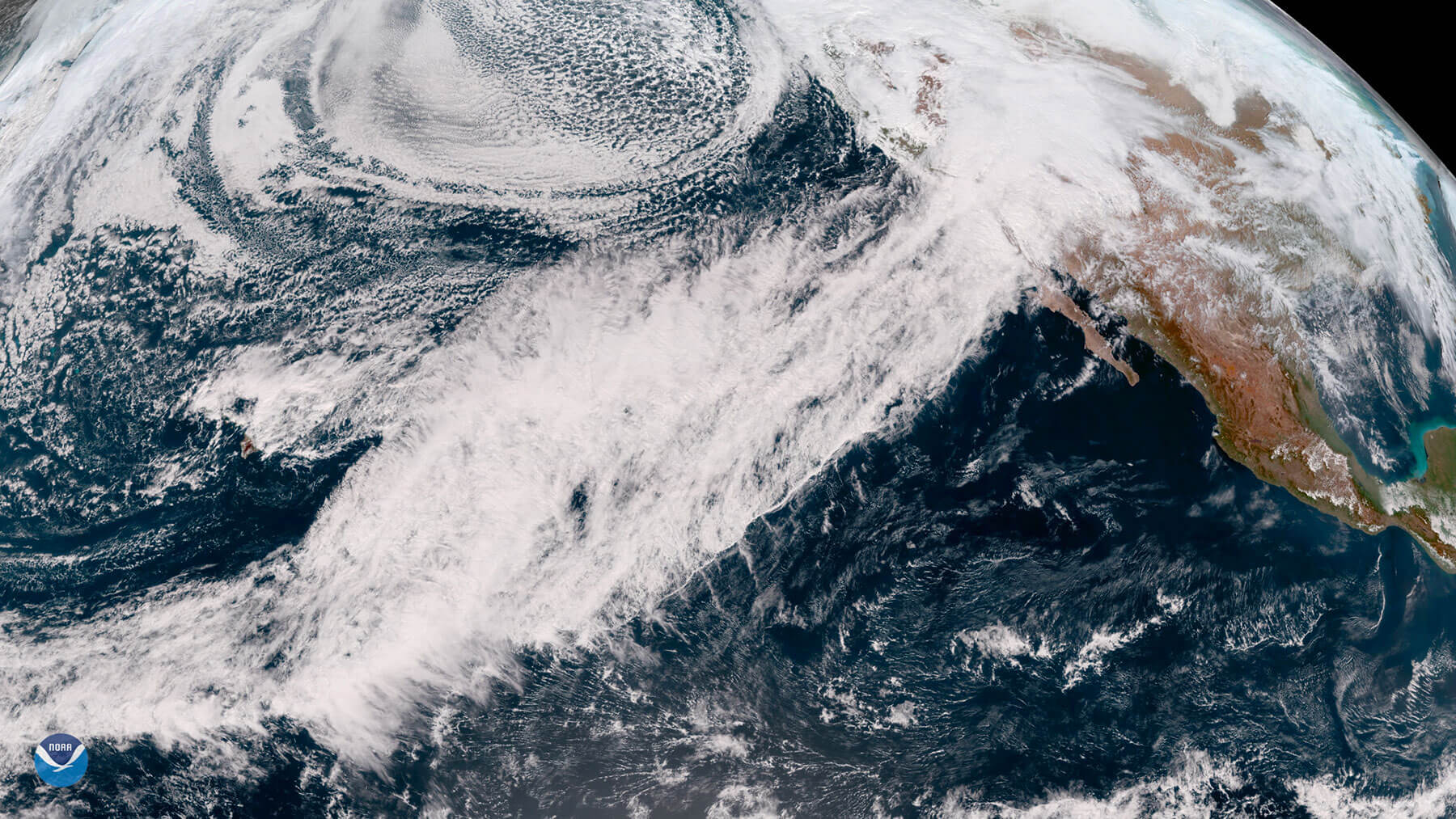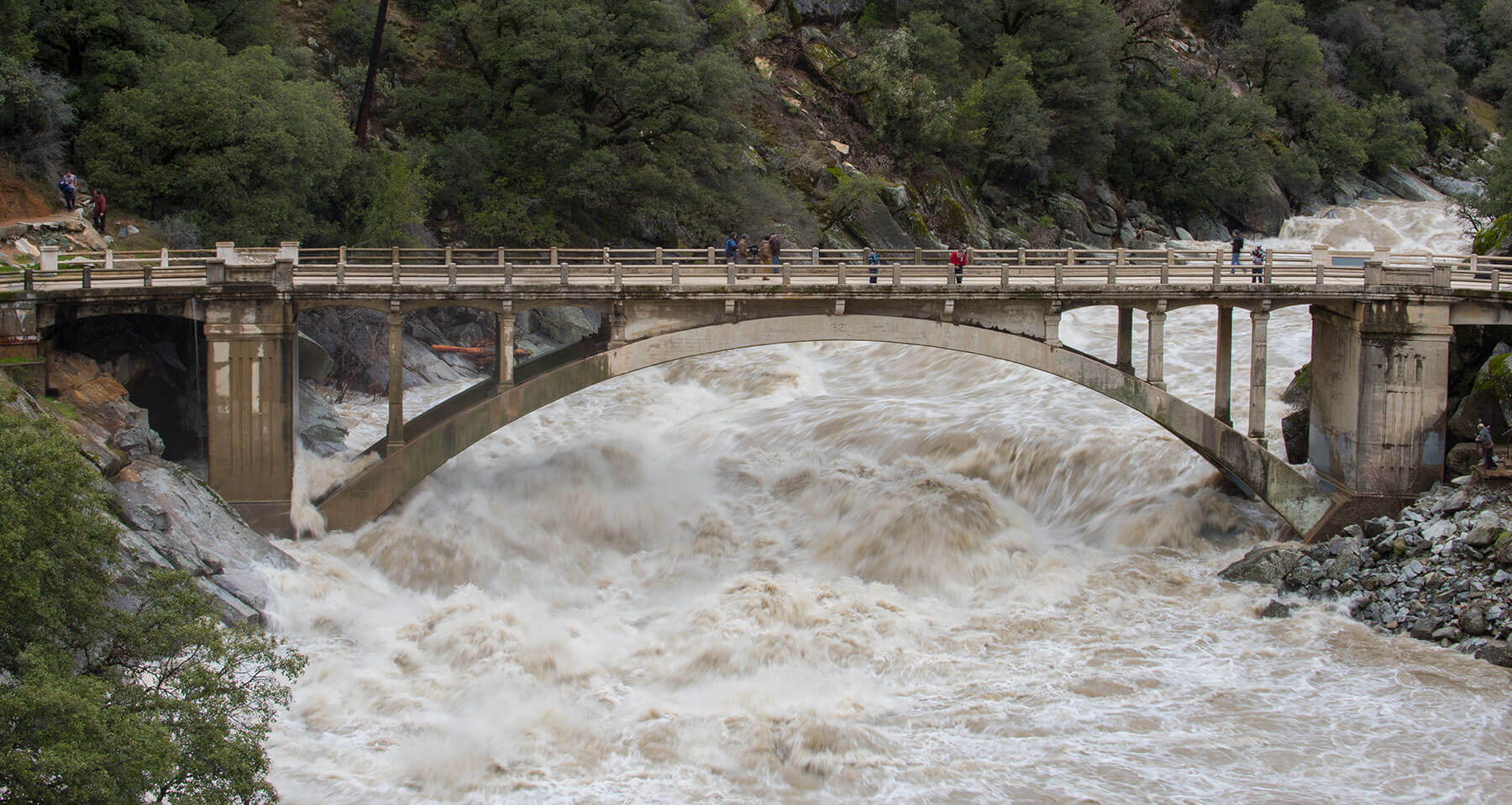When you think of the atmosphere, you probably think of gases like nitrogen and oxygen—the air we breathe. But did you know the atmosphere can hold an entire river of water too?
Atmospheric rivers are long, flowing regions of the atmosphere that carry water vapor through the sky. They are about 250 to 375 miles wide and can be more than 1,000 miles long. Rivers on land generally flow downhill; atmospheric rivers flow in the direction of moving air created by weather systems.
In general, they pick up water vapor from the warm, moist air of tropical regions and they drop the water over land in cooler regions as rain or snow.
How do atmospheric rivers form?

Atmospheric rivers begin as rising moist air in the tropics and result in heavy rain and snow over land. Credit: NOAA
Atmospheric rivers usually begin over tropical regions. Warm temperatures there cause ocean water to evaporate and rise into the atmosphere. Strong winds help to carry the water vapor through the atmosphere. As atmospheric rivers move over land, the water vapor rises up farther into the atmosphere. It then cools into water droplets, which fall as precipitation.
One well-known atmospheric river called the “Pineapple Express” picks up warm, moist air near Hawaii. When the Pineapple Express hits land in the Western United States and Canada, it can cause heavy rain and snow. In California, it can cause up to 5 inches of rain in a day.

This animation captured by NOAA’s Geostationary Operational Environmental Satellite (GOES) West from February 13, 2019, shows an atmospheric river bringing heavy rain and snow to California. Credit: NOAA/CIRA
What kind of weather is caused by an atmospheric river?
If you hear your local meteorologist talking about an atmospheric river, you can probably expect lots of rain or snow in the forecast. Atmospheric rivers are fairly common in winter in the Western United States. In fact, just a few atmospheric river events each year cause up to half of the annual precipitation on the West Coast.

An atmospheric river that drenched California with heavy rain and mountain snow on February 14, 2019, triggering flash floods, mudslides and winter storm warnings in the Sierra Nevada. The conveyor belt of clouds and moisture stretching across the Pacific can be easily seen in this image from NOAA's GOES West satellite. Credit: NOAA
These dumps of rain and snow from atmospheric rivers are an important source of fresh water for the West Coast. However, sometimes this heavy precipitation—which can park over a region for several days—can lead to flooding, mudslides and other disasters.

Visitors at a bridge over the South Yuba River in Nevada City, Calif. during the atmospheric river event across Northern California on January 9, 2017. Credit: Kelly M. Grow/California Department of Water Resources (CC BY-NC 2.0)
How do scientists study atmospheric rivers?
Scientists monitor atmospheric rivers to plan for emergencies and water supply issues. NOAA’s GOES West weather satellite captures images and information, such as the amount and location of moisture in the atmosphere on the West Coast, as often as every 5 minutes. This is important for weather forecasters to make accurate forecasts of heavy rain and flash flooding. Accurate forecasting of these events can help people prepare and stay safe.




